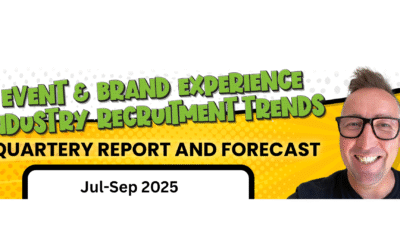If you asked me five years ago whether remote or hybrid work would threaten workplace culture, I’d probably have raised an eyebrow. After all, in many organisations, culture is this slow, messy ritual: daily coffee-chats, embedded behaviours, office jokes, shared stories, hallway check-ins, in-person onboarding, a thousand small gestures over years.
And that’s precisely what hybrid working, handled poorly, can quietly tear apart.
The hidden risks: culture, but dispersed
Let’s call it what it is: hybrid doesn’t automatically protect culture, in fact it can undermine it if you’re not intentional. Consider these pitfalls:
- Fragmented experiences: When some people are in the office and others remote, your employees stop sharing the same “moments.” Domain knowledge, war stories, gut instincts, these get siloed. Harvard Business Review+2MIT Sloan Management Review+2
- Proximity bias: Leaders and influencers tend to give more airtime and opportunities to those they see in person. Remote employees get less spontaneous access to decision-makers. Great Place To Work®+2ClearPeople+2
- Unequal visibility = unequal power: Those in the office pick up informal cues, overhear hallway conversations, get invited to ad hoc meetings. Remote people risk being “out of sight, out of mind.” Gallup.com+2yarooms.com+2
- Mixed cultures within the same org: When teams bend their own norms (because their in-office vs remote mix differs), you end up with little “microcultures” that may diverge from the core brand or values. Harvard Business Review+3Buildings & Cities+3ie-uk.com+3
- Weakened rituals, traditions & symbolic glue: Celebrations, spontaneous praise, physical cues, rituals (e.g. Friday drinks, whiteboard scribbles) lose power when dispersed. The symbolic anchors of culture begin to fade.
- Disconnection and isolation: People feel less connected, less belonging. They may not see how their work ties to the broader mission. Gallup finds that hybrid workers often report weaker connection to organisational culture. Harvard Business Review+1
These aren’t hypothetical. A lot of leaders are waking up to hybrid creep with workforces being nudged slowly into more in-office days because the perceived culture drop is too painful. Business Insider
But, full disclosure: culture loss isn’t inevitable. Hybrid is a reality we must design for, not fight.
If you do it right, hybrid still wins
Let’s be clear: hybrid models have a major upside, and many people would leave for roles without it.
- Studies (e.g. Bloom et al.) show hybrid (e.g. 2–3 days remote) doesn’t reduce productivity or promotion chances and can drastically increase retention. Stanford News+2MIT Sloan Management Review+2
- The flexibility, autonomy and work/life balance are non-trivial draws.
- A more diverse workforce can be built with those in remote or peripheral geographies
- You get to shift culture to be more outcome-driven, less face-time centric.
So, the tension isn’t: hybrid vs culture. The question is: Which version of hybrid and how deliberately do you stitch it into your culture playbook?
How to prevent fracture: intentional culture design
Below are practical principles and tactics to help maintain (or rebuild) a strong culture in a hybrid reality. Use what fits your size, sector, and style.
- Make “culture anchoring days” real
Pick core days when everyone is in (say, 1–2/week). Use those days for rituals you can’t replicate remotely: all-hands, shared lunches, cross-team brainstorms, onboarding, team bonding. Resist the temptation to turn them into jammed meeting days and protect diary space.
- Design for “symmetric presence” in meetings
If one or two people call in, treat them as full participants. Always use good hybrid meeting setups (camera, mics, equal voice). Don’t let in-room conversations proceed without looping in remote voices.
- Overcommunicate and narrate your culture
Because informal signals drop off, you need to be louder with your stories. Share “why we do things this way,” highlight employee stories, celebrate behaviours that exemplify values. When people aren’t bumping into examples in hallways, you have to carry those examples in stories, rituals, newsletters.
- Rethink onboarding & embedding remote employees
Your culture onboarding can’t be limited to one week in the office. Create remote shadowing, culture videos, buddy systems, “off-beat” social moments (e.g. virtual coffee roulette). Make sure your remote joiner doesn’t feel like a second-class version of your in-office people.
- Monitor “culture health” metrics
Don’t rely on gut feeling. Add survey questions (belonging, clarity of values, cross-team connection) and track them over time (office vs remote comparisons). Use pulse tools, ask for stories, listen to absentee signals (voluntary attrition, internal mobility).
- Leadership behaviour = culture signal
Leaders must show up (literally and virtually) in consistent ways. If leaders are always remote, that sends a message. If leaders always talk in the corridor but refuse remote meetings, that’s a problem. Train leaders to behave in both modes as “hybrid leading” is a distinct skill. Great Place To Work®+1
- Invest in connective tools, rituals & infrastructure
Don’t scrimp on good tech for collaboration, social tools, “virtual watercoolers.” Have rituals (e.g. weekly team share, cross-team speed chats, culture days) built in. If people enjoy each other, they’ll make the effort to show up.
- Be transparent about hybrid policy and guardrails
Clearly define expectations (minimum in-office days, collaboration days, core hours), but also where flexibility is allowed. When hybrid policy is murky, people fill gaps with assumptions (which breed resentment).
- Watch for unintended equity gaps
If remote folks are getting passed over for projects or promotions, fix it. If people with long commutes are penalised, acknowledge it. Be scrupulous about fairness and compensate (e.g. visibility opportunities, trust, recognition). Unexpected Virtual Tours & Training+2ie-uk.com+2
A short warning — don’t wait
Culture erosion doesn’t announce itself. It creeps in:
- You might see rising “out of office” attitudes.
- You notice that remote people avoid office days (even optional ones).
- Internal referrals drop, or people stop recommending you as a place “to be.”
- People say: “I never feel like I really know what’s going on.”
These are not minor blips and they’re warning signs. The longer you let them compound, the harder it is to re-anchor culture later.
Final word (and call to action)
Hybrid working isn’t a villain. It’s a reality like gravity, wind, shifting tides. But culture isn’t self-healing in those conditions.
If you’ve spent years building a culture (colleagues, ethos, behaviours, alignment), don’t just drift into hybrid and hope it “holds.” Be proactive. Embed it. Monitor it. Ritualise it. Design it.
Here’s to keeping culture alive, even when we’re not all in the same room.
……………………………………………………………………………………………………………………………………………………
About the author
I’m Robert Kenward. Chief Talent Officer, creator of FitabilityⓇ, and the only recruiter daft enough to build a 12-month guarantee into every hire.
Two decades in recruitment, Live Events, Brand Experience, and Experiential Marketing means I’ve seen it all, from the candidate chair, the client side, and as the recruiter trusted to fix the mess when things go wrong.
That’s why I specialise in senior hires above £60k. I know the pain points, I know the issues, and I know how to get it right first time (96% of the time, in fact 👀).
I take the work seriously, but not myself and I’ll always give you time, candour, and a fresh perspective on those classic hiring headaches.
📱 07710 681980






